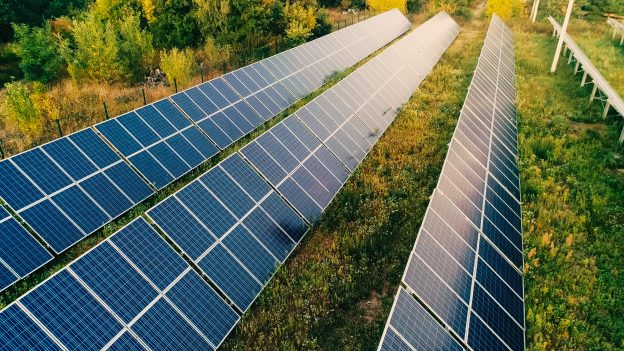Polysilicon:
Polysilicon prices have maintained stable throughout the week. The mainstream concluded price for mono recharge polysilicon is RMB 60/KG, while mono dense polysilicon is priced at RMB 58/KG and N-type polysilicon is currently priced at RMB 71/KG.
Based on current trading activities, the order volume is relatively low, and negotiations are underway in both the upstream and downstream sectors. Due to high inventory and declining prices, manufacturers of crystal pulling are inclined to lower polysilicon prices. Regarding transaction structure, primary manufacturers are responsible for the majority of N-type polysilicon orders, while secondary and tertiary manufacturers are reducing prices to increase shipments of P-type polysilicon.
Regarding supply, previously initiated capacities are now contributing to increased production, resulting in a surplus of P-type polysilicon. Starting from the second quarter of 2024, leading manufacturers plan to introduce new capacities, leading to a significant increase in N-type polysilicon supply during that period. Furthermore, most crystal pulling manufacturers are currently operating at full capacity by utilizing mixed polysilicon. Therefore, TrendForce predicts that N-type polysilicon prices will remain under pressure for some time, with a tentative quoted price of polysilicon standing at less than 70 yuan/kg.
On the demand side, wafer inventory stands close to 4 billion pieces, making the consumption of existing inventory a priority. Consequently, there's been a notable reduction in production scheduling in the wafer segment, thereby weakening the demand for polysilicon.
In conclusion, this week, polysilicon prices have remained stable, but orders are sluggish. However, if production scheduling in the wafer segment sees significant cuts, it's likely that all types of polysilicon prices will come under pressure.
Wafer:
The prices of wafer have declined throughout the week. The mainstream concluded price for M10 P-type wafer is RMB 1.90/Pc, while G12 P-type wafer is priced at RMB 2.65/Pc. The mainstream concluded price for M10 N-type wafer is RMB 1.90/Pc and G12 N-type is priced at RMB 2.90/Pc.
On the supply side, the wafer inventory has surpassed expectations, ranging from 3.9 to 4.1 billion pieces, leaving a considerable surplus awaiting consumption. Faced with this high inventory pressure in the wafer segment, several major manufacturers have proactively adjusted their production schedules to expedite inventory consumption.
On the demand front, operations in the cell sectors are running smoothly, with N-type product shipments proceeding without hindrance. Conversely, there's a decline in market demand for P-type products, with current demand insufficient to absorb the surplus inventory in the upstream wafer segment.
In summary, the pressure on wafer prices has intensified, leading to a decline in prices across all types of wafers. Specifically, the inventory pressure is particularly acute for N-type M10 wafers, with prices of P-type M10 wafers expected to decline alongside the decrease in market demand. Looking ahead, stable wafer prices are unlikely to materialize until inventory levels normalize.
Cell:
Cell prices have been stable this week. The mainstream concluded price for M10 cell is RMB 0.390/W, while G12 cell is priced at RMB 0.380/W. The price of M10 mono TOPCon cell is RMB 0.47/W, while that of G12 mono TOPCon cell is RMB 0.49/W.
Regarding supply, the process of resuming work has remained stable, and monthly production schedules have been adhered to without significant deviations, resulting in a steady cell supply. However, it's worth noting that leading manufacturers are beginning to phase out their P-type capacity. According to TrendForce statistics, only 27% of the remaining 500GW P-type capacity is eligible for upgrading. Therefore, close attention should be paid to the capacity upgrading process and its impact on production efficiency. The successful upgrade and steady online operation of the 125GW P-type capacity could introduce a new variable affecting N-type cell supply.
On the demand side, there continues to be increasing demand for cells in the module sector, in line with scheduled production plans. Consequently, cell prices have remained stable, and there's a positive shift in customer demand towards N-type cells. However, whether cell prices can see an increase hinges on customer acceptance of higher prices.
In summary, the supply-demand dynamics of cells have remained stable, as have cell prices. Nevertheless, as upstream raw material prices begin to fluctuate, there may be negotiations over cell prices in future orders.
Module:
Module prices have remained stable throughout the week. The mainstream concluded price for 182mm facial mono PERC module is RMB 0.93/W, 210mm facial mono PERC module is priced at RMB 0.95/W, 182mm bifacial glass PERC module at RMB 0.94/W, and 210mm bifacial glass PERC module at RMB 0.97/W.
On the supply side, there’s significant divergence in module production scheduling, with leading manufacturers seeing a notable increase in stable production due to potential orders. Conversely, second-ranked and third-ranked manufacturers are experiencing slower-than-expected work resumption processes. Additionally, some producers with high P-type product inventories are considering shutting down their production lines after clearing their inventory at low prices. The persistently high module inventory remains a key factor contributing to sluggish prices in this segment. Consequently, in recent days, many manufacturers have been attempting to deplete their inventories by lowering prices, sacrificing profits for increased shipment volumes.
In terms of demand, the steady growth of distributed PV installations is driving domestic demand for modules, while materials for utility power plant projects of the late second quarter are gradually pulled in. In the overseas market, there’s a gradual uptick in module demand from Europe and the Americas. Based on recent observations, non-Europe and non-Americas markets show a greater acceptance of N-type products.
In conclusion, module prices are expected to remain stable in the short term, with the potential for price increases dependent on future customer demand trends.







